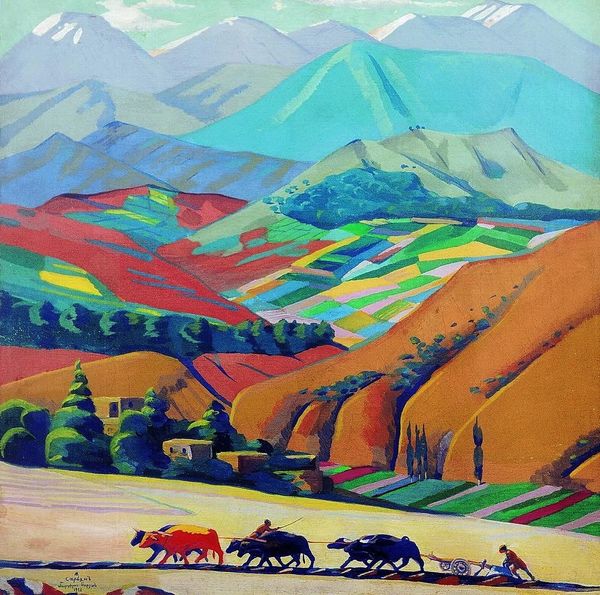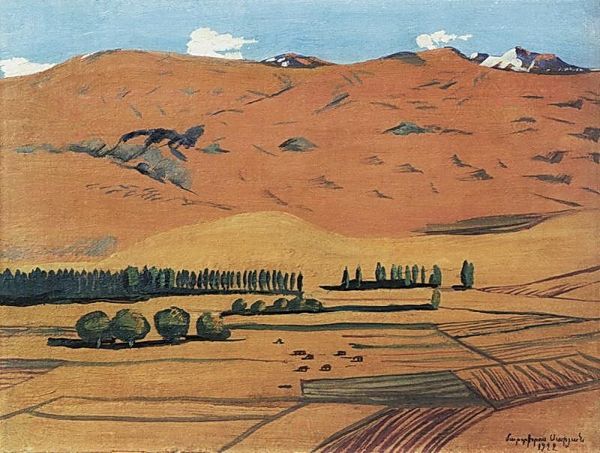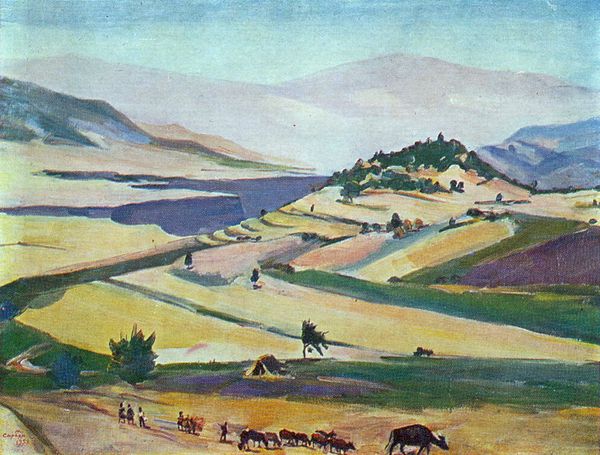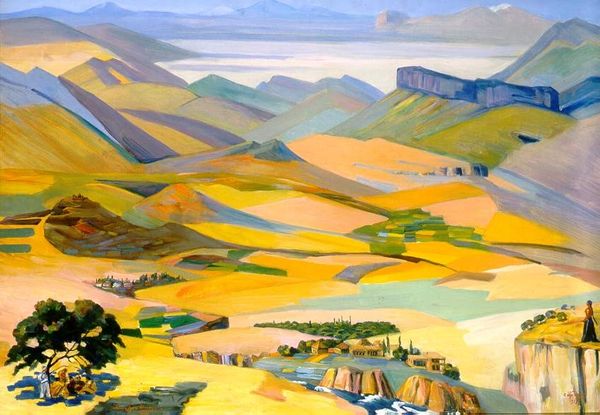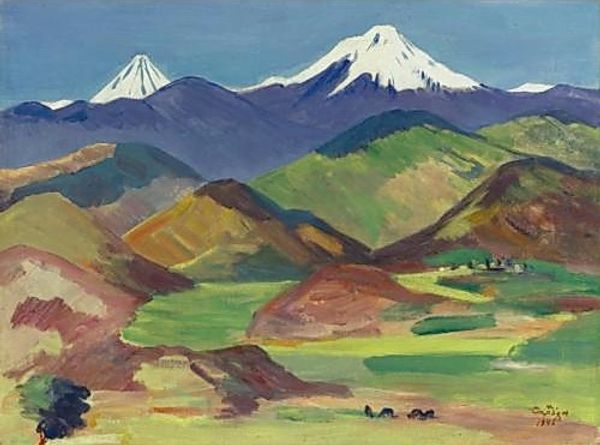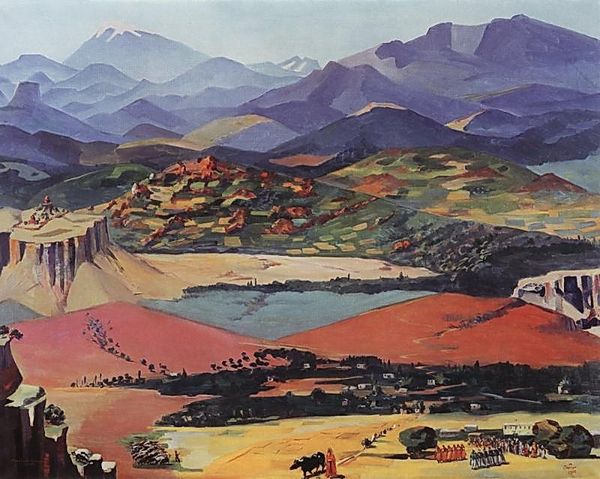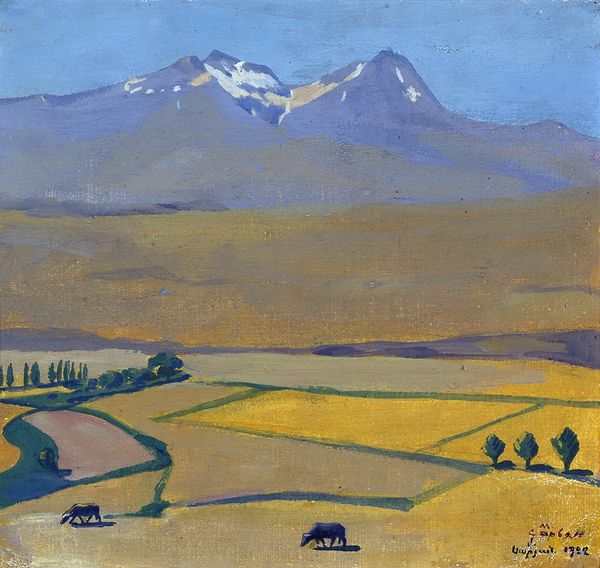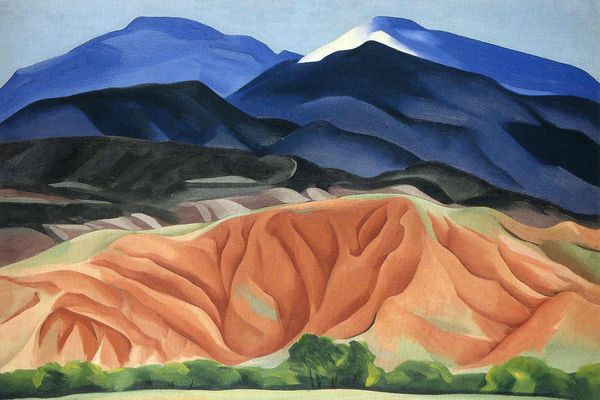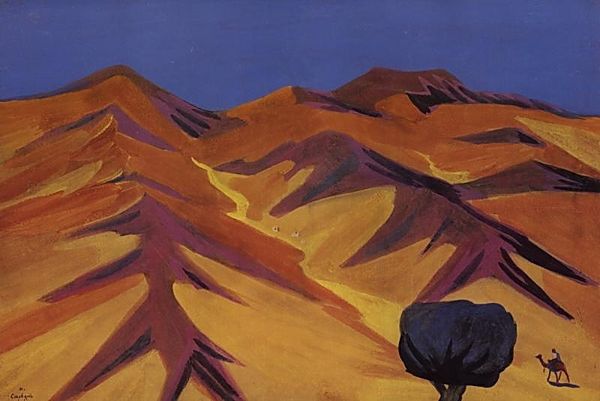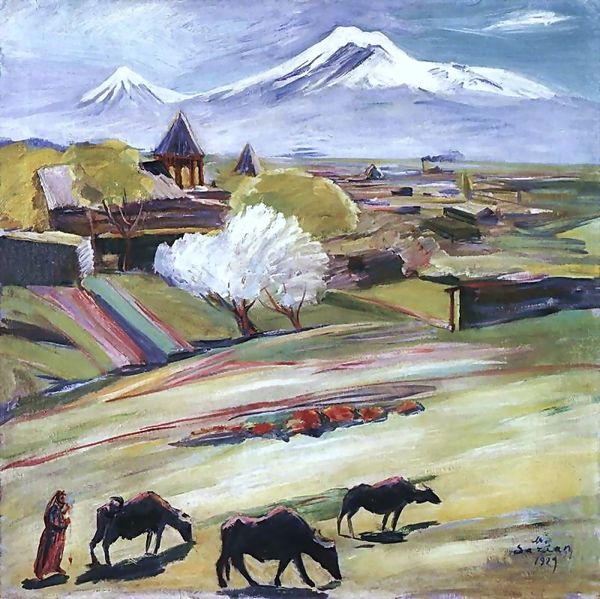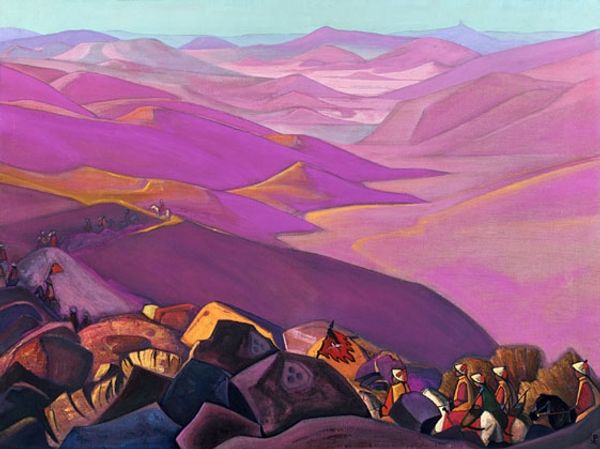
painting, oil-paint
#
animal
#
painting
#
grass
#
oil-paint
#
landscape
#
figuration
#
oil painting
#
mountain
#
expressionism
#
expressionist
#
realism
Dimensions: 110 x 106 cm
Copyright: Martiros Sarian,Fair Use
Curator: Martiros Sarian's "Mount Aragats," painted in 1925, is a compelling landscape rendered in oil. The namesake mountain looms in the background, overseeing a scene of fields and grazing animals. Editor: It strikes me immediately as serene but with a powerful undertow. The vast landscape dwarfs the human and animal figures; there is a visual tension created by the geometric forms clashing against more realistic depictions. Curator: I think you've touched on something key. Sarian was deeply interested in Armenian identity, particularly in relation to land and labor. Consider that this work emerges after the Armenian genocide; its landscapes become laden with social meaning as the site of displacement but also of potential national rebirth. The mountain itself functions almost as a silent witness. Editor: And materially, that tension manifests in the handling of the oil paint itself. The landscape is almost built with strokes, and those heavy impasto areas in the foreground give such tactility to what would otherwise feel distant. I see it less about simple depiction and more about the active building—almost agricultural—of an image. Curator: Absolutely. There's also the consideration of the animals depicted. They appear as both a source of labor but also perhaps as symbols of pastoral Armenia. The painting presents questions about traditional labor systems and agricultural practices in the wake of widespread socio-political trauma, making statements about animal rights in a community that likely did not then conceptualize the matter as we do now. Editor: To your point, that labor continues through to the artist as he applies paint, constructing fields that have meaning. The horizontal composition adds to a certain harmony and a material history made visible. Curator: Indeed. Sarian prompts us to consider not only what Armenia *was* but what it could *become* by grounding its collective identity within its landscape and agrarian culture, including its relations to animal and manual labor. Editor: Well, for me, it shows how materials and composition work together to tell not just a picture, but also its historical underpinnings. There’s such careful craft involved that creates both a sweeping view and very pointed commentary on agrarian processes.
Comments
No comments
Be the first to comment and join the conversation on the ultimate creative platform.

